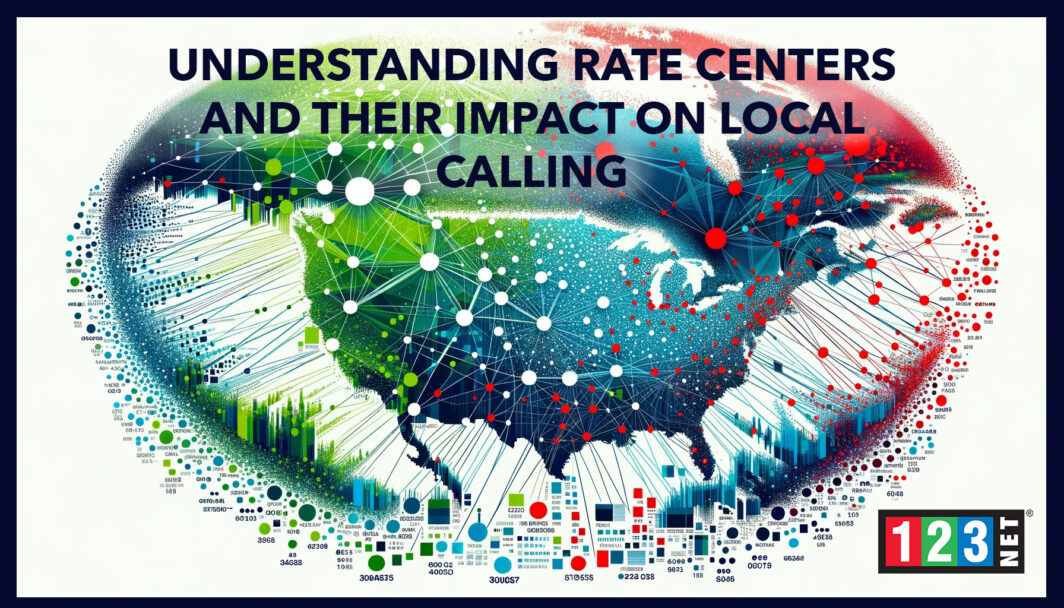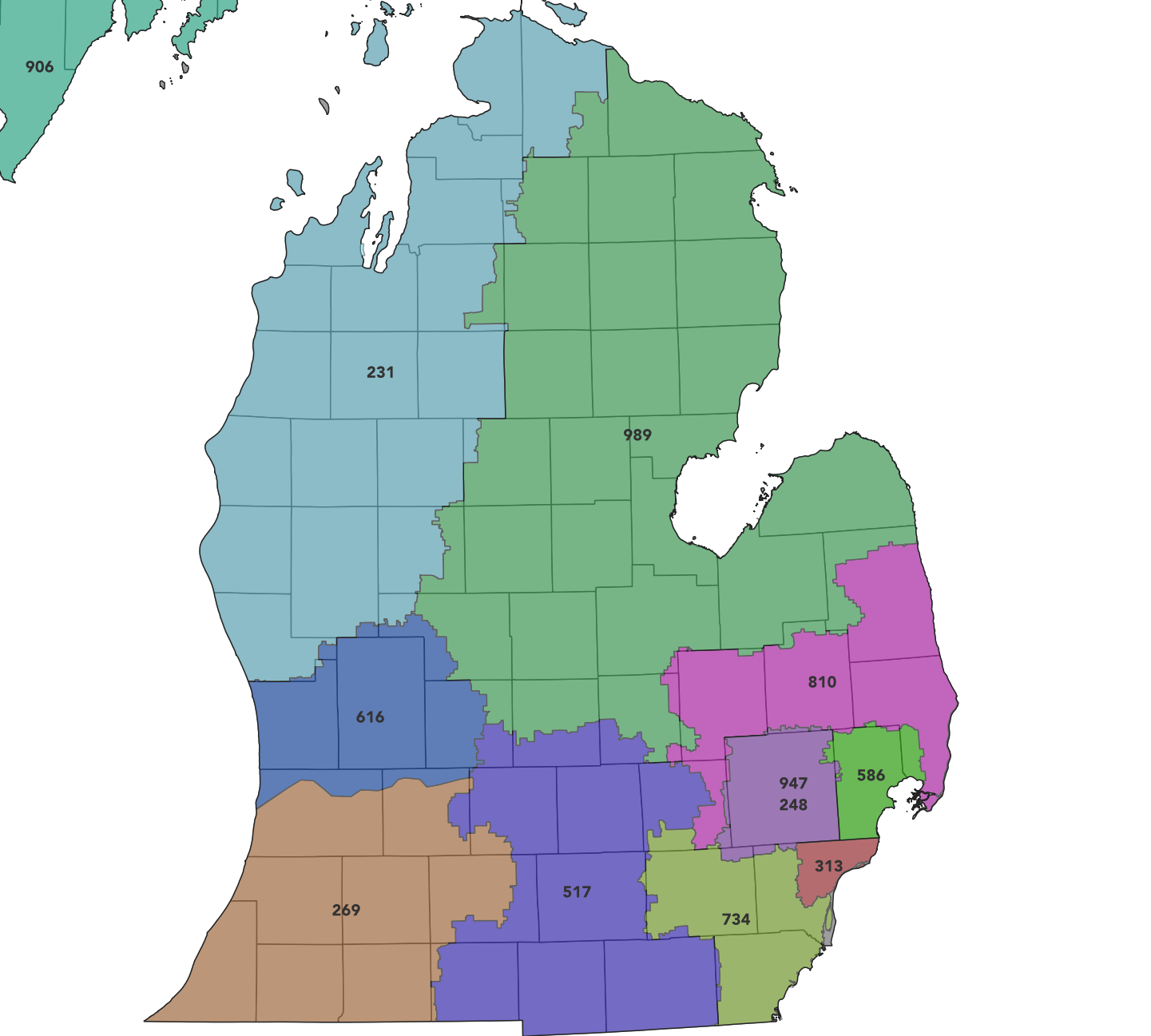
Introduction
The complex telecommunications landscape heavily features the concept of rate centers, critical for businesses engaging with customers from various locations. Essentially, a rate center defines a geographic zone that sets the limits for local call billing, distinguishing between local and long-distance calls. This article explores the nuances of rate centers, highlighting their importance in the Voice over Internet Protocol (VoIP) services sector. It also examines their influence on business operations and local calling tactics. For companies, grasping the workings is vital. It enables the optimization of customer support and the efficient management of call billing and rates. The discussion extends to the operational advantages and challenges presented in the telecommunications field. Moreover, it addresses how businesses can navigate these complexities to enhance customer interactions and reduce communication costs. The understanding of rate centers, therefore, not only aids in better call management but also contributes to strategic decision-making regarding customer engagement and cost efficiency. Through this insight, businesses can leverage the benefits of VoIP services while mitigating the potential drawbacks associated with call billing in diverse geographic regions.
What is a Rate Center?
Defined by the Local Exchange Carrier (LEC), a rate center is a specific geographic area that sets the rules for local and long-distance calling. It plays a key role in the North American Numbering Plan (NANP), which is responsible for organizing phone number allocations. The NANP does this through local area codes (NPA) and number prefixes (NXX), ensuring an organized distribution of numbers. Each rate center is identified by a geographic place name and has a nominal physical location. This identification aids in calculating the distance between callers, which in turn influences the calling rates applied.
The main purpose is to delineate local calling areas. This delineation ensures that calls made are billed as local. Conversely, calls to numbers outside may be subject to long-distance charges. This distinction significantly impacts both individual consumers and businesses by directly influencing the cost of calls. Understanding this topic is crucial for managing communication expenses effectively.
For businesses, especially those operating in multiple geographic locations, comprehending the intricacies can lead to substantial savings. By aligning their operations with the boundaries, businesses can optimize their calling strategies. This optimization includes selecting the most cost-effective VoIP services and call plans that align with their specific needs. Additionally, businesses can enhance customer satisfaction by reducing or eliminating long-distance charges for their clients. The strategic importance extends beyond mere cost management; it encompasses customer relationship management and operational efficiency. As such, a thorough understanding is indispensable for businesses aiming to improve their communication strategies and reduce overhead costs. This knowledge enables informed decision-making regarding telecommunication services and call billing practices.
Rate Center Coverage for VoIP Services
The introduction of VoIP (Voice over Internet Protocol) services has emphasized the importance of comprehending rate center coverage. VoIP enables calls over the internet, thus sidestepping traditional telephony lines. Despite this modern approach, the classification of calls as local or long-distance still adheres to the established system.
For entities leveraging VoIP technology, the rate centers play a crucial role in the billing process of calls to and from their VoIP numbers. Businesses can strategically select VoIP numbers within certain rate centers to refine their customer support. This strategy permits customers to reach them at local call rates, irrespective of the businesses’ actual physical locations. Such a tactic not only boosts customer contentment but also aids in economical call routing and billing.
Understanding the context of VoIP services is vital for businesses aiming to reduce operational costs while enhancing customer engagement. By navigating the nuances of rate centers, companies can offer more accessible communication channels to their clients. This accessibility is especially beneficial for businesses with a wide geographic customer base, as it eliminates potential long-distance charges for the caller.
Moreover, insightful management of VoIP services in relation to rate centers can lead to significant advancements in how businesses interact with their clientele. It fosters a more inclusive environment for customer communication, making services more appealing to a broader audience. Additionally, the strategic use of rate centers can streamline communication logistics, making it a critical consideration for any business looking to capitalize on VoIP technology. This strategic approach not only enhances operational efficiency but also plays a significant role in customer retention and satisfaction.

Geographic Distribution and Identification of Rate Centers
Rate centers are strategically spread across different geographic regions, each linked to specific local area codes and prefixes. To identify a rate center, it’s essential to know both the area code, a three-digit number, and the number prefix, which are the initial three digits following the area code of a phone number. This detail is pivotal for companies when choosing new phone numbers or transferring existing ones to another service provider.
The spatial arrangement of rate centers empowers businesses to focus on particular local calling zones. This focus allows them to adapt their communication tactics to suit their customers’ preferences and requirements. For example, by securing local phone numbers within key rate centers, businesses can ensure calls are considered local, thus reducing or eliminating long-distance fees for their clients.
Such strategic positioning in select rate centers enables companies to enhance their outreach and service delivery. It’s a way to directly connect with local markets, making it easier for customers to reach them without incurring additional costs. Additionally, this strategy significantly aids in building a local presence, even if a business’s physical operations are located elsewhere.
Moreover, by leveraging the geographic distribution of rate centers, businesses can craft a more localized and customer-friendly approach. This method not only improves customer satisfaction but also promotes a cost-efficient communication framework. Understanding and utilizing rate centers effectively can lead to substantial benefits, including improved customer relations, reduced communication expenses, and a stronger local market penetration.

Rate Centers and Local Calling: A Detailed Look
Grasping the dynamics between rate centers and local calling practices is vital for efficient communication oversight. Calls originating and terminating within the same rate center are generally deemed local, attracting lower rates. On the flip side, calls traversing rate center limits are classified as long-distance, incurring higher charges.
This clear division highlights the significance of rate centers in the determination of call billing and pricing. Companies need to be cognizant of demarcations when configuring their communication frameworks, particularly with the adoption of Voice over Internet Protocol (VoIP) services and sophisticated call routing mechanisms. Aligning their contact numbers with the rate centers frequented by their clientele allows businesses to predominantly bill calls to and from their customers as local. This strategy significantly bolsters customer satisfaction and fosters loyalty.
Awareness of rate center intricacies can lead to more informed decisions regarding communication setups, ensuring a business’s calls are cost-effective and customer-friendly. Additionally, understanding boundaries can aid in avoiding unnecessary long-distance charges, making communication more economical for both the business and its customers.
Moreover, strategic selection of phone numbers within specific rate centers can serve as a potent tool for businesses aiming to enhance their market presence. It enables them to effectively reach out to desired customer segments, reinforcing their commitment to accessible and affordable communication. This approach not only improves the customer experience but also strengthens the company’s competitive position in the market.
In essence, a thorough understanding their impact on local versus long-distance calling can significantly influence a business’s communication strategy. It presents an opportunity to optimize call costs, increase customer engagement, and promote a positive brand image. By prioritizing rate center alignment, businesses can achieve a balance between efficient communication management and customer satisfaction.
Business Implications of Rate Centers
The impact of rate centers on businesses transcends simple call billing concerns. Grasping and capitalizing on the nuances of operations can markedly improve customer support frameworks. By adopting local numbers within companies can facilitate a more accessible and economically viable communication channel for their clientele. Furthermore, adept call routing mechanisms can channel incoming communications to specific regional offices or support hubs, offering a more tailored customer service experience.
Additionally, the practice of phone number porting, which entails a business shifting its existing contact numbers to a different service provider, necessitates a deep comprehension of compatibility. Given that not every carrier caters to all, it becomes crucial for companies to confirm such compatibility. This verification process is essential to preserve their established local footprint and ensure uninterrupted customer engagement.
Understanding intricacies allows businesses to navigate the telecommunications landscape more effectively. They are ensuring that their communication strategies align with customer expectations and regulatory frameworks. This strategic alignment not only enhances the customer experience but also fortifies the business’s market position by maintaining a strong local connection.
The strategic use of rate centers can also aid in optimizing operational efficiency and cost management. By carefully selecting service providers and phone numbers that align with their operational and customer service goals, businesses can minimize communication costs while maximizing reach and impact. This approach underscores the significance of rate centers in the broader context of business communications strategy. As well as customer relationship management, and operational planning.
FAQs
- What is a rate center and why does it matter? S: A rate center is a geographic area that determines local and long-distance calling boundaries. It matters because it affects call billing and rates, influencing how businesses and individuals are charged for their calls.
- How do rate centers affect VoIP services? A: They impact VoIP services by determining how calls to and from VoIP numbers are classified and billed. Understanding the coverage is crucial for businesses to optimize call costs and customer support.
- Can businesses choose their rate center? A: Businesses can choose their rate center indirectly by selecting phone numbers associated with specific area codes and prefixes. This choice is strategic for localizing customer interactions and managing call costs.
- How do you find the rate center for a specific phone number? A: The rate center for a phone number can be identified using the area code and number prefix. This information is vital for businesses when selecting or porting phone numbers to ensure alignment with their target markets.
Conclusion
Rate centers play a crucial role in the telecommunications landscape. They are influencing how calls are billed and how businesses interact with their customers. By understanding and strategically utilizing this information, businesses can optimize their communication strategies. They enhance customer support, and manage call costs effectively. As the world of telecommunication continues to evolve, the significance remains a constant, underpinning the intricate balance between connectivity and cost.




